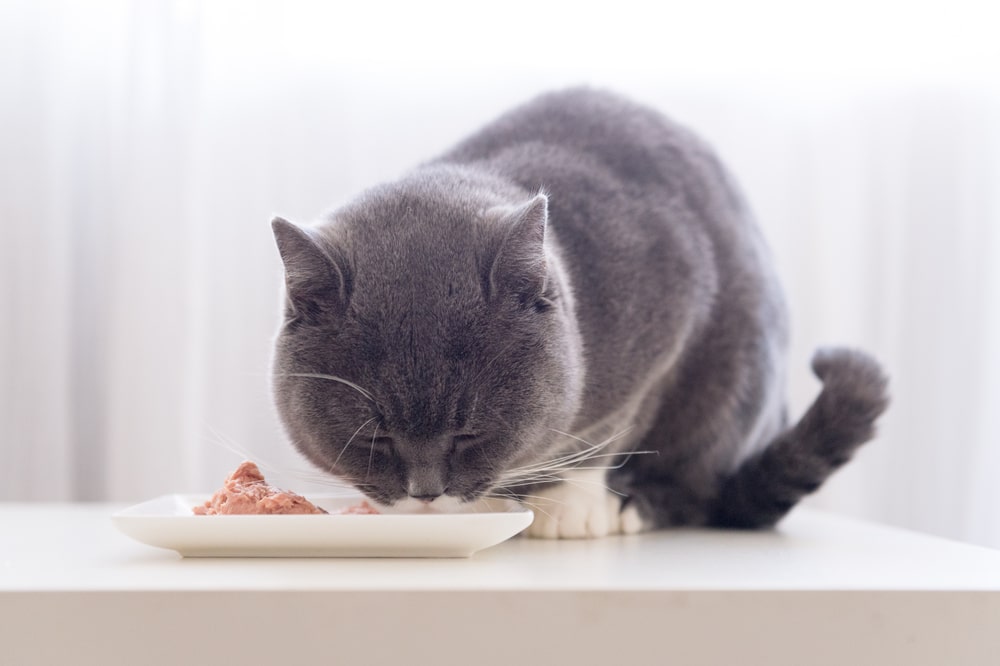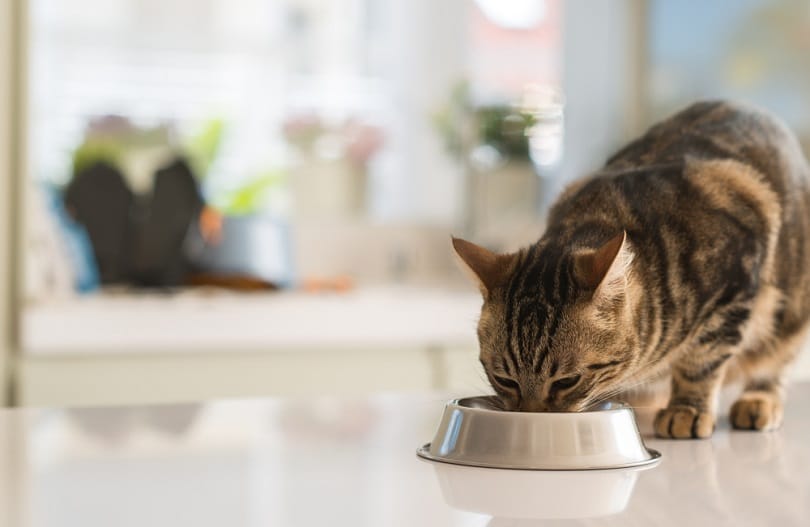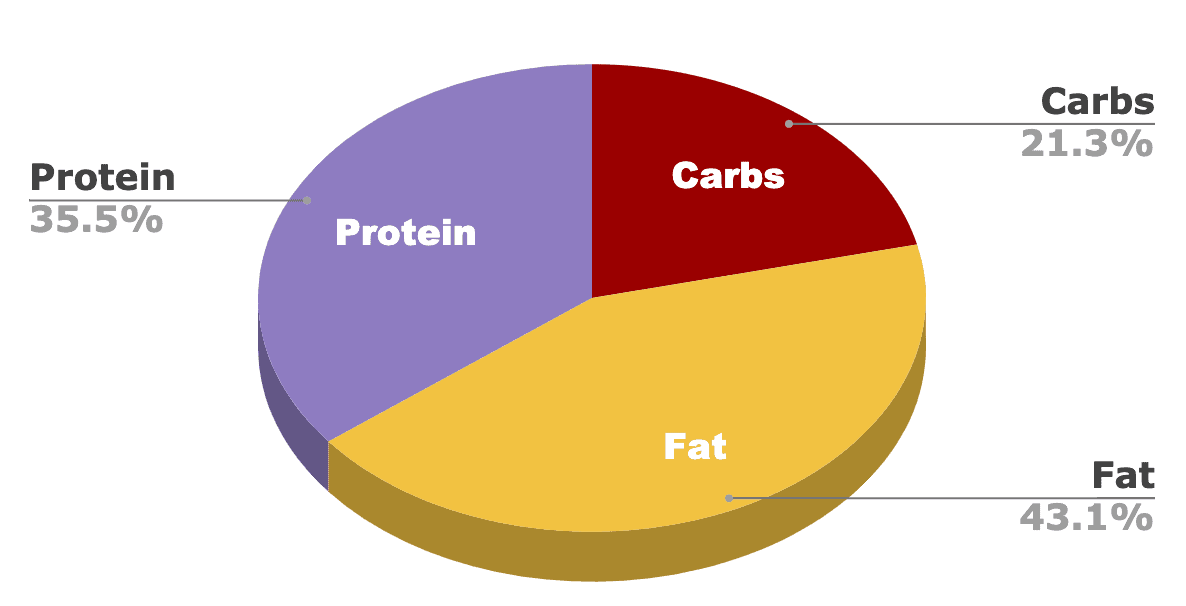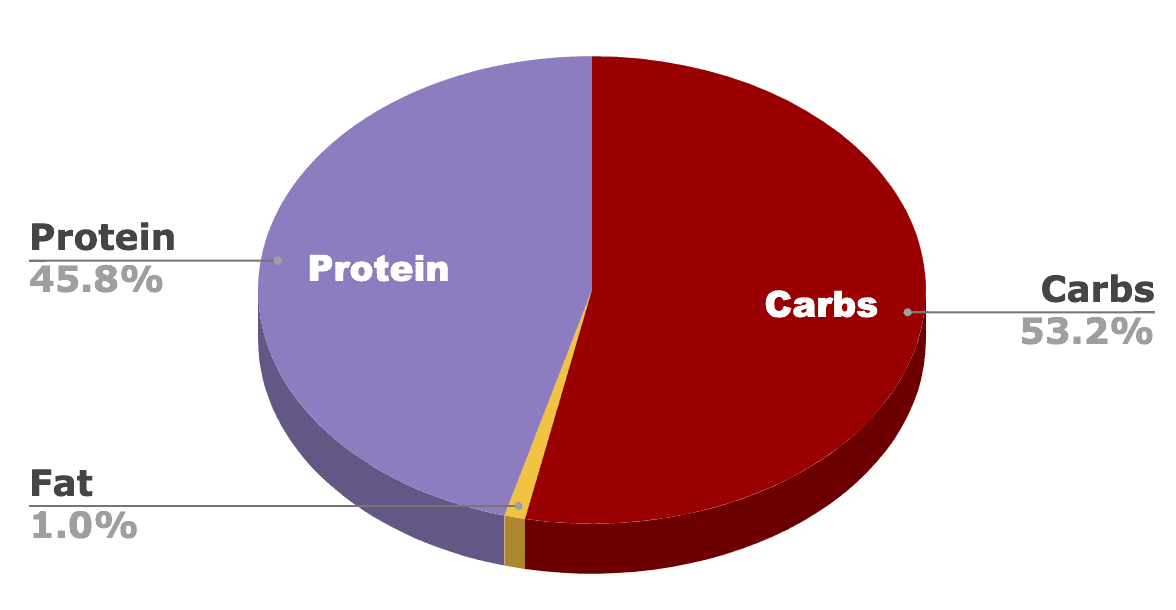Review Summary
We give Diamond Naturals Cat Food a rating of 4.0 out of 5 stars.
Diamond Naturals makes healthy yet affordable food for pet owners. The company makes a wide range of both dog and cat food, including recipes for specific ages and breeds of animals. One of its most popular ranges is the Diamond Naturals range, which is made in the United States from carefully selected, exceptional-quality ingredients, and this is the range that we’ll be going over today. The Naturals range has a variety of options for all cat life stages and is packed with superfoods like blueberries, spinach, and carrots and loaded with beneficial antioxidants and minerals.
Both Diamond’s wet and dry food ranges are ideal options for cat owners with indoor, outdoor, and senior cats, as the company has food to suit any cat’s lifestyle. To find out more about these options and our favorites, read on for an in-depth look at what Diamond Naturals has to offer!
At a Glance: The Best Diamond Naturals Cat Food Recipes
| Image | Product | Details | ||
|---|---|---|---|---|
| Our favorite dry food |

|
Diamond Naturals Indoor Formula Dry Cat Food |
|
CHECK PRICE |
| Our favorite wet food |

|
Diamond Naturals Chicken Dinner Adult & Kitten Canned Cat Food |
|
CHECK PRICE |

|
Diamond Naturals Active Chicken Meal & Rice Formula Dry Cat Food |
|
CHECK PRICE | |

|
Diamond Naturals Kitten Formula Dry Cat Food |
|
CHECK PRICE | |

|
Diamond Naturals Whitefish Dinner Adult & Kitten Canned Cat Food |
|
CHECK PRICE |
Diamond Naturals Cat Food Reviewed
Who Makes Diamond Naturals Cat Food & Where Is It Produced?
Diamond Pet Foods is owned by a company called Schell & Kampeter Inc. and is manufactured at four state-of-the-art facilities throughout the United States, including Missouri, South Carolina, and California. Diamond has three different pet food brands for dogs and cats and has also manufactured pet foods for several other companies.
The company got its start in Missouri in the early 1970s, where the family-owned company first began under the name “Meta Feed and Grain.” The family aimed to make high-quality pet food that the average pet owner could afford, which quickly led the company to be one of the fastest-growing and leading pet food manufacturers in the United States.

Which Types of Cat Is Diamond Naturals Cat Food Best Suited For?
Diamond makes both wet and dry cat food in six different formulas, including active, indoor, and kitten foods. It is suitable for any breed of cat at any life stage. The food is also relatively affordable and is free from artificial colors, flavors, and preservatives, making it ideal for health-conscious cat owners.
Which Types of Cat Might Do Better With a Different Brand?
Diamond does not make any specialized foods for cats with specific dietary needs, so if you have a cat with an illness or condition that requires a prescription diet, you’ll need to speak with your vet and go with a different brand. If your cat has a urinary tract issue, for example, Hill’s Prescription Diet MultiCare Urinary Care Dry Cat Food is a great option, although you will need authorization from a vet.
Discussion of the Primary Ingredients (Good & Bad)
The Diamond Naturals line includes five different dry recipes/flavors, all of which are healthy choices overall, although they contain a few undesirable ingredients too. Here are a few of our favorite additions to the food, as well ingredients that we feel could be left out.
Meat
In all five dry cat foods and the Naturals wet food range, meat is the first listed ingredient. Protein derived from animal sources is essential for the health and wellbeing of your cat, so it’s great to know that most of the protein contained in the Naturals line comes from animal sources. Cage-free chicken is one of the most common protein sources, so you know that your cat is getting protein from ethically raised chicken.

Added Vitamins, Minerals & Antioxidants
All the dry food from Diamond Naturals contains added probiotic strains that help improve and maintain your cat’s gut health. These probiotics work by introducing enzymes that make digestion easier and make the nutrients in your cat’s food more bioavailable, and it helps boost their immune system. All the recipes also contain proteinate minerals like calcium and iron, which are far more digestible and bioavailable to your cat. There are also added antioxidants, like vitamin C, from brightly colored vegetables and fruit that help fight disease and keep your cat’s immune system in tip-top shape.
Questionable Ingredients?
While meat is the first ingredient and there are great healthy additions in the Naturals line, there are also questionable filler ingredients that we feel that cats can do without. These include peas and rice, which are high-quality carbohydrates, but cats do not need them, and some studies suggest that rice may decrease taurine absorption in cats, resulting in a taurine deficiency. The food also contains pearled barley and powdered cellulose, an insoluble fiber that is essentially wood pulp and is nothing more than a filler.

Protein vs Carbohydrates?
Since cats are obligate carnivores, protein is one of the most essential ingredients to look for in their food, and while they do need a small amount of carbohydrates, they don’t need much. The Naturals line as a whole has an average of 37% protein in its dry food range, with a carbohydrate average of 36%. This protein (even though it comes primarily from meat) versus carbohydrate (mostly from fillers) ratio is not an ideal balance for cats, and we feel that they could decrease the total carbohydrate content substantially to make the food more nutritionally balanced.
Feeding your cat a high-quality diet is important for keeping them healthy and happy. But it goes beyond the food you choose; the dishes they use also matter. The Hepper NomNom Cat Bowl is our favorite for its unique, five-star design that protects from whisker fatigue and promotes good posture which also aids in better digestion. As an added bonus, it’s beautifully crafted and offers a modern take on the traditional cat bowl that fits seamlessly with all home stylings. Learn more about the NomNom by clicking here. At Catster, we’ve admired Hepper for many years and decided to take a controlling ownership interest so that we could benefit from the outstanding designs of this cool cat company!

A Quick Look at Diamond Naturals Cat Food
- Meat is typically the first listed ingredient
- Comparatively inexpensive
- Added antioxidants, minerals, and probiotics
- Added omega fatty acids
- Plenty of fiber
- Five different dry foods to choose from
- Several filler ingredients
- High carbohydrate content overall
- Low average protein content

Recall History
There have been several recalls of Diamond Naturals cat food over the years, although it’s important to point out that this does not necessarily indicate a low-quality food. That said, it’s important to know the recall history of the company that you’re entrusting with your pet’s nutrition.
Diamond has only had a few recalls in its history, all of which were fairly minor and not life-threatening:
- There was a recall of multiple recipes, including five dog food recipes and two cat foods due to possible aflatoxin (a mycotoxin) contamination.
- In April 2012, there was a recall of a large amount of dry dog food due to salmonella contamination, and then the same thing happened again in May.
- One line of kitten food was recalled due to low thiamine levels.
Reviews of the 3 Best Diamond Naturals Cat Food Recipes
Now that you are familiar with what the Diamond Naturals range is all about, let’s take an in-depth look at three of our favorite cat food recipes from Diamond Naturals.
1. Diamond Naturals Indoor Formula Dry Cat Food

The Indoor Formula Dry Cat Food is our favorite choice overall and is loaded with superfoods like blueberries, carrots, and kelp, as well as guaranteed probiotics for optimum gut health. Real cage-free chicken is the first two listed ingredients, which is an ideal, ethical, and natural source of protein, and the food contains a crude amount of 32% minimum. This is followed by healthy whole foods, like kale and coconut, and the food is packed with essential omega-3 and -6 fatty acids, which are essential for healthy skin and coat. Like all the food in the Naturals range, the food is free from artificial colors, preservatives, and flavors.
Unfortunately, the food does contain a high percentage of carbohydrates at almost 30%, which is not ideal for cats. It also contains a fair bit of filler ingredients, including rice and powdered cellulose.
Calorie Breakdown:
- Loaded with beneficial superfoods
- Contains added antioxidants and probiotics
- Cage-free chicken is the primary protein source
- Contains essential omega-3 and -6 fatty acids
- Free from artificial colors, preservatives, and flavors
- High carbohydrate content
- Contains questionable filler ingredients
2. Diamond Naturals Chicken Dinner Adult & Kitten Canned Cat Food

This canned food Naturals range for both adults and kittens has chicken as the first ingredient, chicken broth second, and chicken liver third, with a mostly animal-derived protein content of 10%. The food is also loaded with beneficial vegetables and fruits, such as carrots, pumpkin, blueberries, and kelp, and beneficial antioxidants, minerals, and vitamins. The main benefit of canned food is the moisture content — cats do not drink much water, and with this canned food, you can rest easy knowing that your cat is getting adequate hydration. The food is also free from artificial flavors, colors, or preservatives.
The only issue we found with this food is that it has an unusual texture that some cats may not enjoy.
Calorie Breakdown:
- Chicken is the first listed ingredient
- Loaded with beneficial vegetables and fruits
- Added antioxidants, minerals, and vitamins
- High moisture content
- Free from artificial flavors, colors, or preservatives
- Unusual texture
3. Diamond Naturals Active Chicken Meal & Rice Formula Dry Cat Food

The Diamond Naturals Active Dry Cat Food is suitable for active adults, nursing or pregnant mothers, and kittens. It has a crude protein content of 40% minimum to give your cat the energy boost that they need, and it comes primarily from cage-free chicken, which is the first listed ingredient. The food is also enhanced with superfoods, like coconut, spinach, and blueberries, and contains guaranteed probiotics for optimum gut health. It also has natural DHA to support brain and vision health, as well as taurine and omega-3 and omega-6 fatty acids, and is free from artificial flavors, colors or preservatives.
There is little to fault with this cat food, but it does contain unnecessary filler ingredients, like rice.
Calorie Breakdown:
- 40% protein content
- Cage-free chicken is the first listed ingredient
- Enhanced with powerful superfoods
- Contains guaranteed probiotics
- Added natural DHA, taurine, and omega fatty acids
- Free from artificial flavors, colors, and preservatives
- Contains unnecessary filler ingredients
Feeding your cat a high-quality diet is important for keeping them healthy and happy. But it goes beyond the food you choose; the dishes they use also matter. The Hepper NomNom Cat Bowl is our favorite for its unique, five-star design that protects from whisker fatigue and promotes good posture which also aids in better digestion. As an added bonus, it’s beautifully crafted and offers a modern take on the traditional cat bowl that fits seamlessly with all home stylings. Learn more about the NomNom by clicking here. At Catster, we’ve admired Hepper for many years and decided to take a controlling ownership interest so that we could benefit from the outstanding designs of this cool cat company!
What Other Users Are Saying
It’s always helpful to see what others are saying about a cat food brand to help better assess its quality and whether your cat is likely to enjoy it. Here are opinions from other leading cat food experts.
- “The product line is superb. All six formulas are free of synthetic preservatives, colors, and flavors. Each recipe is nutritionally balanced and complete, evidenced by the AAFCO Statements on labels. While comparison shopping, I found that this product line costs less than most other brands of wholesome cat foods.”
- “The Diamond Naturals range comes packed with adequate nutrients that will improve your cat’s health.”
- “Diamond Naturals Indoor Formula Dry Cat Food is a good quality product which focuses on the core needs of your indoor cat’s diet.”
- Amazon: A ton of pet food gets purchased on Amazon and Chewy.com, and we always give an in-depth look at customer reviews on these sites. You can check out Amazon reviews here and Chewy reviews by clicking here.

Conclusion
All in all, the Diamond Naturals cat food range is an affordable and overall healthy choice for your feline. While there are certainly better (and more expensive) options available, the Naturals range covers all the bases and provides your cat with all the essential nutrients that they need for a balanced diet. The food is made in the U.S., contains meat as the first ingredient across the range (predominantly cage-free chicken), and is loaded with antioxidants and probiotics. Additionally, all the food in the Naturals range is free from artificial flavors, colors, and preservatives.
Our only concern with this range is the high carbohydrate content and the use of unnecessary fillers, a fact that is difficult to avoid in commercial pet foods. Overall, we highly recommend Diamond Naturals cat food for adults, senior cats, and kittens.
Contents
- Review Summary
- At a Glance: The Best Diamond Naturals Cat Food Recipes
- Diamond Naturals Cat Food Reviewed
- Who Makes Diamond Naturals Cat Food & Where Is It Produced?
- Which Types of Cat Is Diamond Naturals Cat Food Best Suited For?
- Which Types of Cat Might Do Better With a Different Brand?
- Discussion of the Primary Ingredients (Good & Bad)
- A Quick Look at Diamond Naturals Cat Food
- Recall History
- Reviews of the 3 Best Diamond Naturals Cat Food Recipes
- 1. Diamond Naturals Indoor Formula Dry Cat Food
- Calorie Breakdown:
- 2. Diamond Naturals Chicken Dinner Adult & Kitten Canned Cat Food
- Calorie Breakdown:
- 3. Diamond Naturals Active Chicken Meal & Rice Formula Dry Cat Food
- Calorie Breakdown:
- What Other Users Are Saying
- Conclusion





















